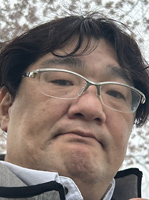Increasing Child Suicides Tetsuya Shibui (Freelance Journalist)

Last year, there were 513 suicides among children and students. This is the second year in a row that the number has been in the 500s. The National Police Agency began publishing the number of suicides by occupation in 1980. The number has only been in the 500s for the past two years, which is the highest level ever.
The suicide mortality rate for children (number of suicides per 100,000 people) can also be found in the Ministry of Health, Labor and Welfare’s vital statistics. Comparing 1990 and 2021, the rate for 10-14 year olds has quadrupled from 0.6 to 2.4, and for 15-19 year olds, it has roughly tripled from 3.8 to 11.5. Although a simple comparison over time is not possible, there is no doubt that the rate is on the rise.
The number of suicides in Japan as a whole exceeded 30,000 per year from 1998 to 2011. One of the reasons for this is the collapse of the bubble economy. On the other hand, due to a decrease in suicides among middle-aged and elderly men, the rate has remained in the 20,000 range since 2021.
However, there is one age group whose suicide numbers have not decreased. That is teenagers. The number has been increasing sharply since 2017. In that year, the Zama incident occurred, in which nine men and women were murdered. Men and women in their teens to 30s who had posted “I want to die” on Twitter (now X) were murdered.
Because of this incident, the Ministry of Health, Labor and Welfare has started SNS counseling as part of suicide prevention measures. The Ministry of Education, Culture, Sports, Science and Technology is promoting education on “how to send out an SOS” in response to the ongoing suicide rate among children. How can we send out an SOS about worries such as suicidal thoughts? As part of education, classes are being held.
However, as mentioned above, the number of teenage suicides has been increasing since that year. What is the relationship between sending out signs, having a consultation desk, and the increase in suicides? There has yet to be a proper investigation.
In June 2022, the government established the “Children and Families Agency.” It serves as the command center for child and child-rearing policies. Therefore, a “Children’s Suicide Prevention Office” was established and an “Emergency Strengthening Plan for Children’s Suicide Prevention” was drawn up.
The plan consists of: 1) identifying suicide risk by using one device per person, 2) establishing a “Youth Suicide Crisis Response Team” made up of experts from various professions, and 3) analyzing factors.
1) is based on trust in schools and teachers, so its effectiveness is unknown.
2) is modeled on Nagano Prefecture’s efforts. However, Nagano Prefecture has one of the highest suicide rates among teenagers in the country.
Regarding 3), an analysis was released in May by the General Incorporated Association “Life Support Suicide Prevention Promotion Center.” The analysis was based on the “Guidelines for Background Investigations When a Child Suicide Occurs.”
The “Guidelines” include “basic investigations” conducted by schools and “detailed investigations” where experts are committee members. However, in this analysis, only one case was provided for a “detailed investigation.” Even in the “basic investigation,” only 272 cases were collected. The results were not sufficient.
What are the background and factors of children’s suicides? Until now, even a framework for investigations has not been created. The price has come due.
